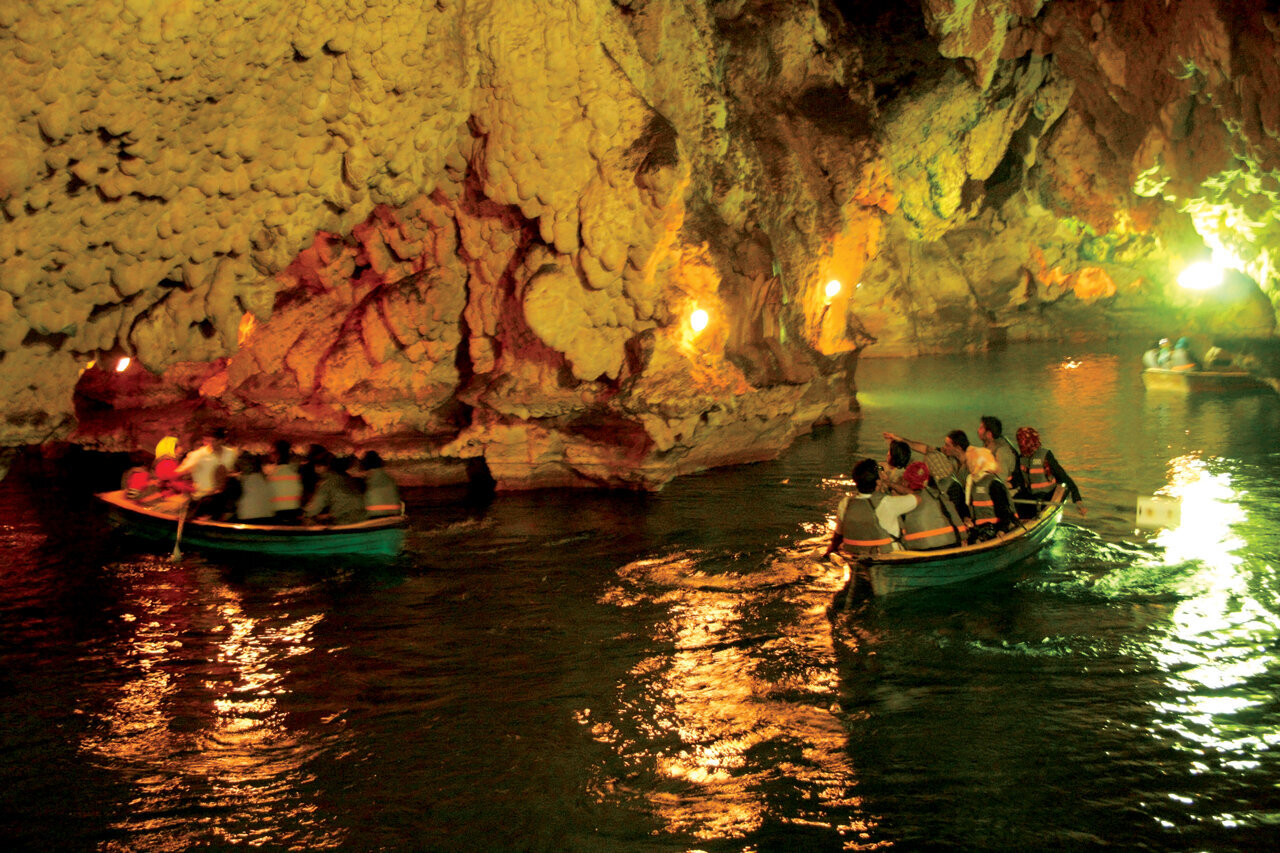Saholan Cave: a natural marvel in northwest Iran

TEHRAN – The picturesque Saholan village, approximately 42 kilometers southeast of Mahabad city in northwest Iran, stands as a testament to the geological marvels that nature has sculpted over millions of years.
Perched at an elevation of over 1700 meters above sea level, this extraordinary cave boasts a unique blend of water, soil, and limestone, making it one of the most remarkable natural formations in the country.
With its geological structure characterized by water channels, soil formations, and limestone formations, the Saholan cave distinguishes itself as the second-largest water cave in Iran, following the renowned Alisadr cave.
Dating back to the end of the Cretaceous period, approximately 70 million years ago, this cave served as a dwelling and refuge for humans during the second and first millennia BC, according to Visit Iran.
Jacques de Morgan, who was a French mining engineer, geologist, and archaeologist, was the first to study and identify the Saholan cave a century ago, followed by the exploration conducted by an English group during World War II and, subsequently, by Iranian speleologists in 1994. The cave’s internal network comprises large ponds interconnected by water channels, with 300 meters of waterway and 250 meters of a water-less route already discovered and organized.
Featuring two main entrances connected by a passageway, the cave offers the unique experience of entering from one and exiting from the other. The cave’s roof, towering about 50 meters above the lake’s surface, complements the impressive depth of water, reaching nearly 30 meters in some areas.
The cave’s microclimate, characterized by a temperature difference of 10 to 15 degrees from the external environment and humidity ranging between 70 and 80 percent, has fostered the growth of moss on the stones and rocks. The only inhabitants of this subterranean world are wild pigeons and bats, while the absence of light prevents algal growth in the water, leaving only microscopic organisms.
Saholan cave’s interior is adorned with calcareous sediments in various shapes, creating a visually stunning landscape. Tourists exploring the cave will find facilities for boating within the 300 meters of waterway, as well as dry land routes spanning 250 meters. The cave’s pure calcium carbonate-covered roof, elevated 10 meters above the water in some sections, adds to the allure, exhibiting a captivating mixture of elements.
Tourists visiting the Saholan cave area can avail themselves of various facilities, including accommodation, sightseeing opportunities, and entertainment services. The region also offers climbing opportunities, providing adventurers with a chance to experience the breathtaking landscapes surrounding this natural wonder. As Saholan cave continues to reveal its secrets, it stands as a testament to the geological wonders that lie beneath the surface of Iran’s northwest region.
AM
